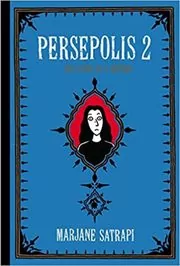Middlemarch Summary
Author: George Eliot
This page offers our Middlemarch summary (George Eliot's book). It opens with an overview of the book, and follows with a concise chapter-by-chapter summary.
Drafted with AI assistance and reviewed by a human editor.
As an Amazon Associate, we earn from qualifying purchases (at no extra cost to you).
This book has 1 recommender!
Overview
Within this unique narrative, the author defies the Victorian norms by infusing elements that are more aligned with modern novels. The story was met with varying reactions, due to its atypically melancholy mood and frequent references to obscure literature and science, an unexpected style from a female writer of the time. The author rejects the traditional romantic standards often seen in women's writing of the era, illustrating this through the marriage of Rosamond and Lydgate, who base their relationship on obsolete romantic notions. The author also breaks from tradition by continuing the story past the marriage, allowing for a reflection on the authenticity of their union.
The author's refusal to adhere to standard "happily ever after" tropes drew criticism, particularly due to her gender. For example, she features a failed marriage between two mismatched individuals that never truly finds harmony, as seen in the lives of Lydgate and Dorothea. The latter escapes a life of regret when her older husband dies unexpectedly, while Rosamond and Lydgate marry at a young age, setting themselves up for inevitable difficulties.
The narrative is largely guided by two primary life decisions: marriage and profession. The author emphasizes the consequences of rushed, idealistic courtships that result in marriages lacking understanding and compatibility. Yet, she also shows the success of unions where women have more authority, like the marriage between Fred and Mary. Choosing an occupation is another significant theme, exploring the ramifications of wrong career decisions and the impacts of confining women purely to domestic responsibilities. The narrative's complexity extends from society to individual characters, showcasing human life's array of quiet tragedies, small victories, and moments of dignity. Furthermore, the story's unique structure, focusing on multiple characters instead of a single protagonist, reinforces its experimental nature and the author's desire to portray the intricacy of provincial life.
Edited by
Software engineer whose passion for tracking book recommendations from podcasts inspired the creation of MRB.
Lead investor at 3one4 Capital whose startup expertise and love for books helped shaped MRB and its growth.







Comments
Did we miss something? Have feedback?
Help us improve this page by sharing your thoughts